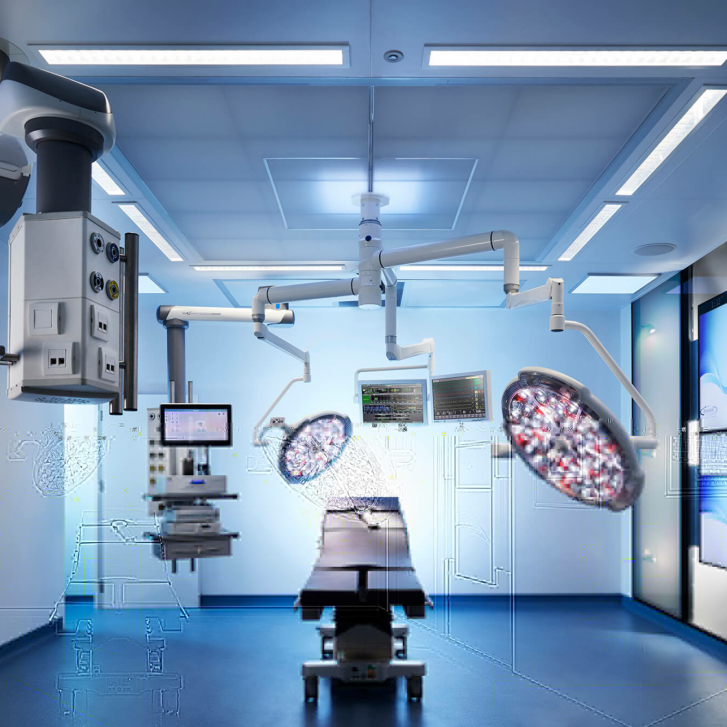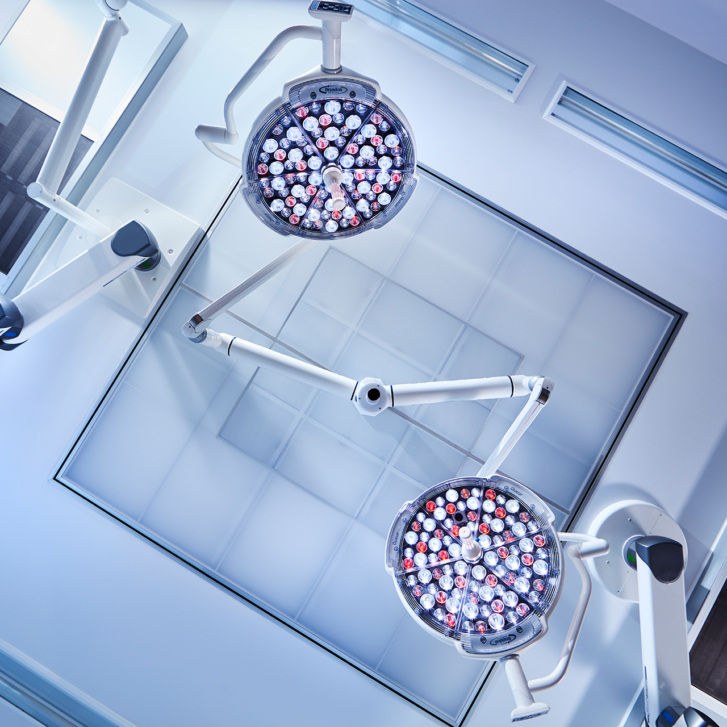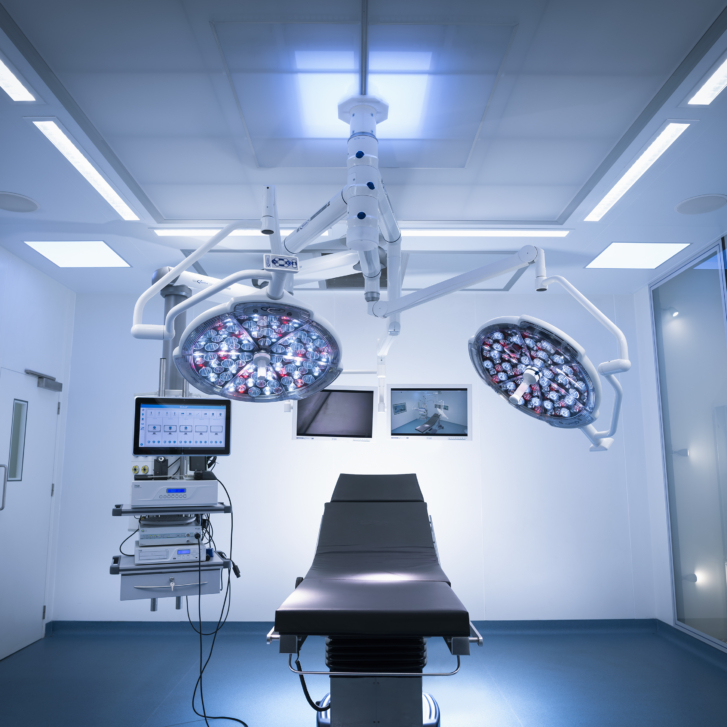How can innovative operating table technology transform decontamination?
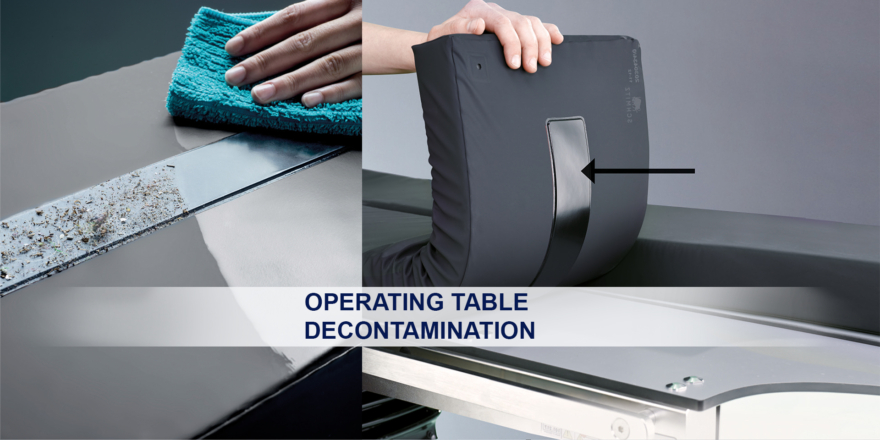
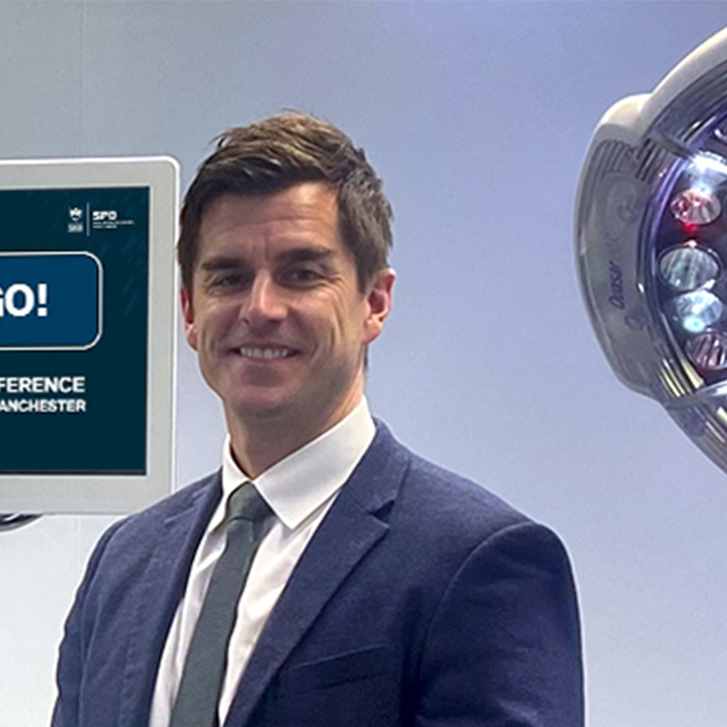
About the author:
Matt Mills, National Sales Manager (Operating Tables) Brandon Medical
Matt Mills is a seasoned medical device sales professional with five years of experience in the operating tables specialism and a deeper understanding of healthcare needs. He has sold a wide range of medical products, including large capital items such as operating tables, patient warming machines and patient monitoring, as well as consumable items like wound dressings, needles, and gloves. His favourite product to work with is general operating tables due to the diversity and variety of surgical specialties it covers. He holds a BSc in Sports Physiotherapy and is driven by a passion for optimal patient outcomes. Matt brings world-leading medical products and services to the NHS and private health sector and is always motivated by innovation and challenging the status quo.
Operating Table Decontamination – an important area of operating theatre decontamination standards
Hospitals are exposed to innumerable diseases and bacteria every day, making it essential for hospital staff to clean all surfaces with potential for cross-contamination between patients-everything from equipment to bedding and seating, even the curtains!
Operating theatres are one of the busiest parts of the hospital with a high flow of patients and staff. It is the place where the patient is most vulnerable due to the invasiveness of the procedures performed and the proximity of various surgical and anaesthetic equipment. It is of utmost importance to create a safe and clean environment for each patient and staff (Shallik et al. 2022).
Noncritical medical devices are those that come in contact with intact skin but not mucous membranes. Intact skin acts as an effective barrier to most microorganisms; therefore, the sterility of items coming in contact with intact skin is “not critical.” However, these items (e.g. operating tables) could potentially contribute to secondary transmission, by contaminating the hands of health care workers or by contact with medical equipment that will subsequently come in contact with patients. (Weber & Rutala, 1997)
NICE has estimated that 300,000 patients a year in England develop a healthcare-associated infection (HCAI). These figures only include NHS facilities – where HCAI was found to cost over £1 billion per year – so the true scale of the issue across the entire healthcare sector is likely to exceed the initial estimate far.
What is HCAI?
Healthcare-associated infection covers any infection that develops as a direct result of medical intervention, e.g. surgical treatment, or indirectly as a result of being in contact with a healthcare setting e.g. a hospital or care home. Due to the prevalence and cost of HCAI, both to patient wellbeing and financially, hospitals work hard to comply with infection prevention policies. Individual policies may vary slightly to suit the needs of a specific facility. However, all policies will include guidelines for the maintenance of reusable equipment – including operating tables and mattresses.
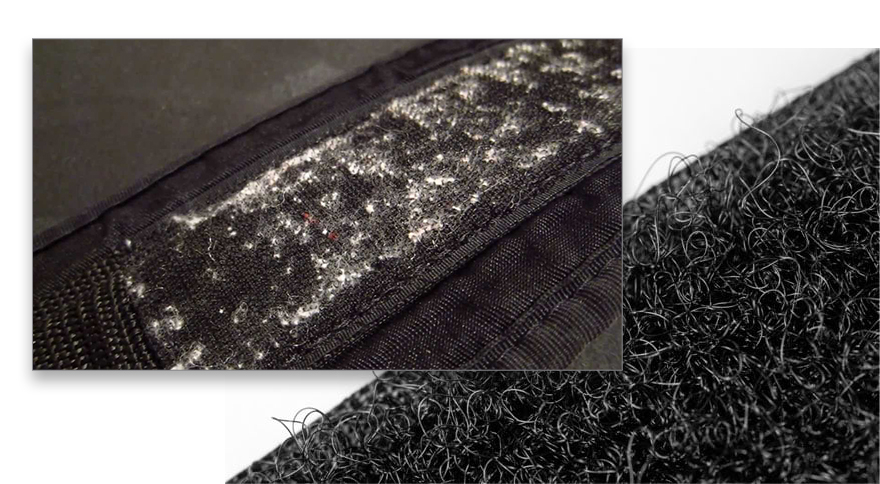
Operating table decontamination velcro problem
The VELCRO® Problem
The majority of operating tables used in operating theatres utilise Velcro® to secure the mattress to the operating table. The Joint Commission guidebook on environmental infection prevention recommends minimizing the use of Velcro® whenever possible, but if it is present, that facilities ensure it is in good condition.
Keeping Velcro® straps on patient tables in good condition, however, is easier said than done.
Clinical staff in theatres frequently raise concerns around the Velcro® strips that secure operating mattresses to the table base. The Velcro® gets really dirty over time and keeping it clean is very difficult. The Velcro® is normally found both on the mattress and on the table itself, which means there’s double the amount of Velcro® to be cleaned. They tend to use bleach wipes to clean the Velcro® straps, but they still get stained. Even with the bleach wipes they can’t really get into the hook and loop material. They can’t send the table straps out to get laundered or they might not come back. Wiping them down is really the only way they can clean them (McCullough, 2019).

The DIAMOND® operating table, manufactured by SCHMITZ u. Söhne and exclusively distributed in the UK by Brandon Medical offers several unique and innovative features to help support the infection prevention effort.
The Solution for the problem of operating table decontamination
The DIAMOND® table is the ONLY table on the market that uses wipe-clean gel strips (no Velcro®) to secure the mattress pads. These gel strips are secured to the mattress only, so the table is left completely free of anything adhesive. This allows the table to be quickly and easily decontaminated and the gel strips themselves are so simple to clean with a disinfectant wipe.
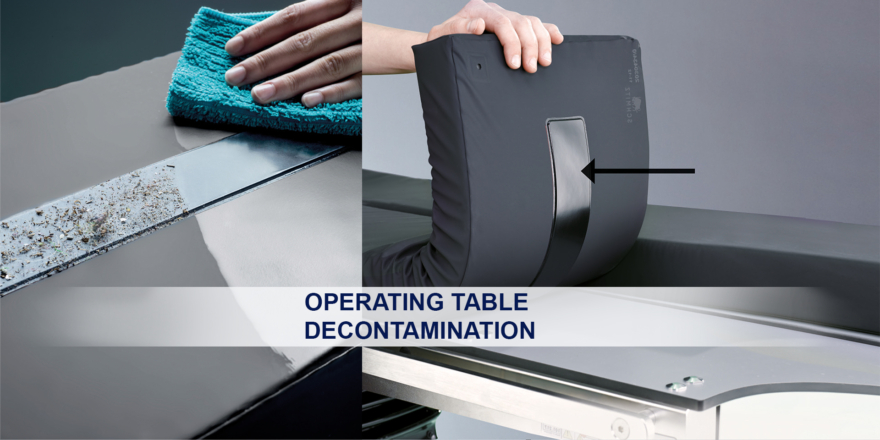
Decontamination ‘Under the Caster’
There appears to be limited recommendations within the NHS on exactly how an operating table should be decontaminated. Some examples of general recommendations are below:
- Clean the legs and wheels of trolleys and tables
- Clean and disinfect any furniture or equipment that came in contact with the patient or may have become soiled or damp, including the operating table, surgical lights, blood pressure cuffs, and tourniquets.
- Clean and disinfect the floor around the operating table (up to 1.5 metres away from the table)
- Clean and disinfect all flat surfaces (wipe from top to bottom, then from the centre outwards)
- Clean and disinfect the patient bed and its attachments, positioning devices, and patient transfer devices. (Mathenge & Prasad, 2021)
“To minimise recontamination of an area and transfer of micro-organisms, clean from: top to bottom and clean to dirty”
“Large and flat surfaces should be cleaned using an ‘S’ shape motion, starting at the point furthest away, then overlapping slightly but without going back over the area to avoid recontamination”. (NHS, 2021)
The author could not find any specific NHS recommendation for staff to attempt to clean and disinfect UNDERNEATH the operating table chassis or underneath the casters. This was confirmed anecdotally through discussions with NHS staff who said that this simply does not happen in practice. This is understandable as it is often impossible to access the underside of a heavy operating table.
Perhaps also it is widely perceived that the underside of the table does not necessarily require decontamination?
An emerging body of research suggests that hospital floors are covered with harmful bacteria, could be an underappreciated source for pathogen dissemination and may serve as a potential source of infection. Even if people don’t directly touch the floors, other things that patients, visitors, and staff routinely touch are in contact with the floor and touching objects on the floor frequently resulted in transfer of pathogens to hands
Deshpande et al (2017) cultured 120-floor sites among 5 hospitals:
- 22% of the floor sites were positive for methicillin-resistant Staphylococcus aureus(MRSA).
- 33% of the floor sites were positive for vancomycin-resistant enterococci(VRE).
- 72% of floor sites were positive for Clostridioides difficile ( difficile).
- 24% percent of high-touch objects were contaminated with more than one pathogen.
- 57% of contaminated objects in contact with the floor transferred pathogens (bacteria) to hands.
With this in mind, it is reasonable to assume that the health care-associated pathogens found on the floor would easily transfer to the underside of the operating table and casters, subsequently transferring to other parts of the table including frequent touch points.
“The ability to easily clean equipment and surfaces in hospitals should be one of the deciding factors when making purchases”

“If you can’t clean it, don’t buy it”
When purchasing medical equipment and furniture (e.g. operating tables) and to reduce the risks associated with cross-infection, the method of decontamination of all new medical furniture before purchase must be considered. Even where something has been purchased previously it does not mean that there is not a better product available that is easier to clean. Consideration must be given to how easy it is to clean and whether it can be appropriately decontaminated between patient use. (East Lancs NHS Trust Procurement Dept, 2023)
Sopha (2017) coined the phrase “If you can’t clean it, don’t buy it” and presented the case that the ability to easily clean equipment and surfaces in hospitals should be one of the deciding factors when making purchases. All surfaces are potential reservoirs for harmful pathogens, and making them easy to clean can save countless lives. In healthcare design, the decision to use particular materials and products is in part due to its ability to be cleaned. Despite the greatest technologies available, surfaces that are difficult to clean still present a very real danger to staff and patients. Thus, it is suggested that Infection Control personnel be involved in the purchase decision.
A prime example of a new product that is designed exclusively for infection control is the cleaning shuttle, manufactured by SCHMITZ u. Söhne. The cleaning shuttle is completely unique in the market and fully compatible with the DIAMOND® table.
For the very first time, the operating table can be cleaned easily and thoroughly from UNDERNEATH the chassis and casters thanks to this accessory. The shuttle consists of a frame design, into which the DIAMOND® table (set to maximum height) is inserted. The supports of the shuttle are positioned directly under the seat of the table. The staff then lowers the DIAMOND® table which, in effect, raises the undercarriage from the floor, so that the underside of the table can now be optimally cleaned.
An additional optional accessory, designed exclusively for infection control and compatible with the Diamond table is the splash guard (pictured below). The splash guard for the central delivery point at the foot of the DIAMOND® operating table serves as a protection in fluid-intensive surgeries, e.g. in urology or obstetrics. The result is the cleaning effort required for the DIAMOND® operating table is reduced significantly

In most, if not all of the operating table models frequently found in UK operating theatres, in addition to the Velcro fixation, the screws that secure the top of the operating table to the base have concave ‘pits’ (see left and below).
Clearly these concavities potentially provide areas for fluids and dirt to accumulate and therefore harmful bacteria to multiply.


By contrast, the design and construction of the DIAMOND® operating table and attachments have been optimised. A focus on closed construction, smooth surfaces and the absence of angled elements facilitates thorough cleaning of the tables. Even critical points such as screw heads on the horizontal surfaces are closed, convex or completely concealed. This ensures that there are virtually no pits or concavities where bacteria can multiply undisturbed.
References
Shallik, N.A., ElKarta, E., Mirishova, S., Othmani, I., Miladi, G., Suleiman, H.M. (2022). Infection Control and Prevention in Operation Theatre. In: Shallik, N.A., Ismail, A., Al Hariri, O. (eds) Improving Anesthesia Technical Staff’s Skills. Springer, Cham. https://doi.org/10.1007/978-3-030-88849-7_7
Sopha K (2017) If You Can’t Clean It, Don’t Buy It. Buffalo NY, Showcase. March 30, 2017.
Weber DJ, Rutala WA. Role of environmental contamination in the transmission of vancomycin-resistant enterococci. Infect Control Hosp Epidemiol 1997; 18:306–9.
Cleaning the operating theatre – CEH Journal. https://www.cehjournal.org/wp-content/uploads/Pages-25-26-111.pdf
When Infection Prevention Can Mean Sacrificing Image Quality – Beekley. https://blog.beekley.com/when-infection-prevention-can-mean-sacrificing-image-quality
Infection Control and Prevention in Operation Theatre. https://link.springer.com/chapter/10.1007/978-3-030-88849-7_7
Rational Approach | Disinfection & Sterilization Guidelines …. https://www.cdc.gov/infectioncontrol/guidelines/disinfection/rational-approach.html
Cleaning Hospital Beds: Time for a change? – Innova Care Concepts. https://www.innovacareconcepts.com/en/blog/cleaning-hospital-beds-time-for-a-change/
Cleaning the operating theatre – CEH Journal. https://www.cehjournal.org/wp-content/uploads/Pages-25-26-111.pdf
SYSTEM PROCEDURES – Mid West Ports. https://www.midwestports.com.au/Profiles/midwestports/Assets/ClientData/Documents/HSEQ/Procedures/RAI-PRO-003_Rail_Safety_Management_System_Overview.docx
Hospital floors may pose a larger health risk than previously thought. https://www.sciencedaily.com/releases/2017/02/170228185332.htm
Caselli, Elisabetta, et al. “Reducing Healthcare-Associated Infections Incidence by a Probiotic-Based Sanitation System: A Multicentre, Prospective, Intervention Study.” PLoS One, vol. 13, no. 7, Public Library of Science, July 2018, p. e0199616.
Recent articles

Hybrid Operating Theatre vs. RAPTOR Theatre: Key Differences and Benefits Explained
Explore the differences between hybrid and RAPTOR theatres. Learn about their unique capabilities and benefits to optimize surgical care

India GMEC-2024 Global Medical Exhibition & Conference
GMEC 2024: Exploring Healthcare Innovation and Patient Care Advancements

European Healthcare Design 10-12 June 2024 - Human-centered acute care design
Human-centered ICU design and SMART self learning Operating theatres improve efficiencies

